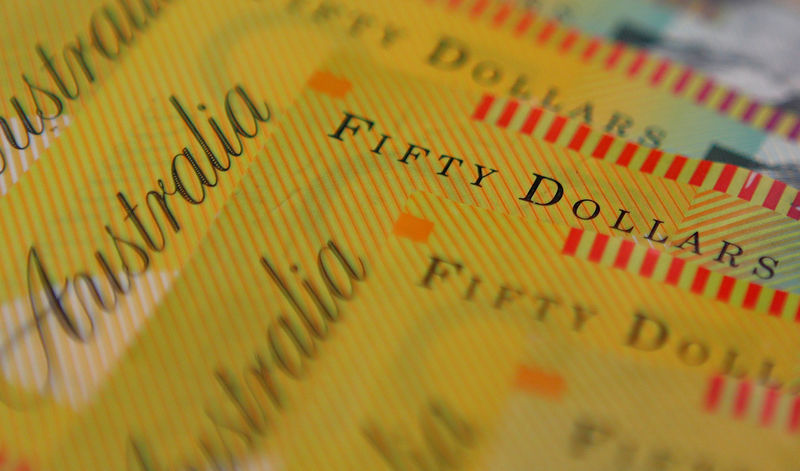 © Reuters. FILE PHOTO: Illustration photo of Australian dollars
© Reuters. FILE PHOTO: Illustration photo of Australian dollarsBy Swati Pandey and Wayne Cole
SYDNEY (Reuters) – Australia’s central bank mapped out a steady course for rates at its first meeting of 2018 this month, stressing that a pick-up in wage growth was necessary to ensure a much-needed recovery in inflation.
Minutes of the Reserve Bank of Australia’s (RBA) February meeting showed policy makers had become more confident about the domestic outlook, thanks in part to a synchronized upturn in the global economy.
The RBA has left rates at 1.50 percent since August 2016, the longest spell of stable policy since the early 1990s.
That had helped in reducing the unemployment rate to 5.5 percent and bringing inflation closer to its 2-3 percent target band, minutes of the meeting showed.
“Further progress on these goals was expected over the period ahead but the increase in inflation was likely to occur only gradually as the economy strengthened,” the RBA said.
“Even with the strength in the labor market, wage growth was yet to pick-up.”
Just last week, RBA Governor Philip Lowe said he would like to see annual wage growth accelerate to around 3.5 percent, from the current 2 percent.
The target appears ambitious as firms are reluctant to pay more, in part because they cannot raise prices.
That, in-turn, is constraining consumer spending as households are sitting on a mountain of debt after years of speculating in the property market.
The combination of low wage growth and high debt means the RBA will stand pat on rates for a while yet.
The average household mortgage debt-to-income ratio has risen to around 140 percent at the end of 2017 from nearly 120 percent in 2012, RBA data shows.
“The more debt households have, the more sensitive their cash flow, and hence consumption, is likely to be to a rise in interest rates,” RBA Assistant Governor Michele Bullock said in a speech on Tuesday.
“Households with higher debt levels may also sharply curtail their consumption in response to an adverse shock such as rising unemployment or large falls in house prices, amplifying any economic downturn.”
Bullock, however, judged the overall level of mortgage stress among households was “relatively low” at present, in part because those with the most debt also had the greatest ability to fund it.
ENCOURAGING SIGNS
There were also reasons for cheer.
Data out last week showed Australia’s streak of employment gains reached the longest on record in January.
Figures on retail sales also suggested that the weakness in household consumption seen since early-2017 had not continued into the December quarter.
In addition, government spending on public infrastructure had boosted non-mining business investment and was likely to support economic growth for some time.
As a result, the RBA forecast gross domestic product (GDP) growth to average “a bit above 3 percent” over the next couple of years.
Still, Lowe is in no hurry to put up rates, recently saying the Board saw no “strong case” for a move. Futures markets are not fully pricing in a 25 basis point hike until early 2019.
The RBA cautioned that a rising Australian dollar
Source: Investing.com




























